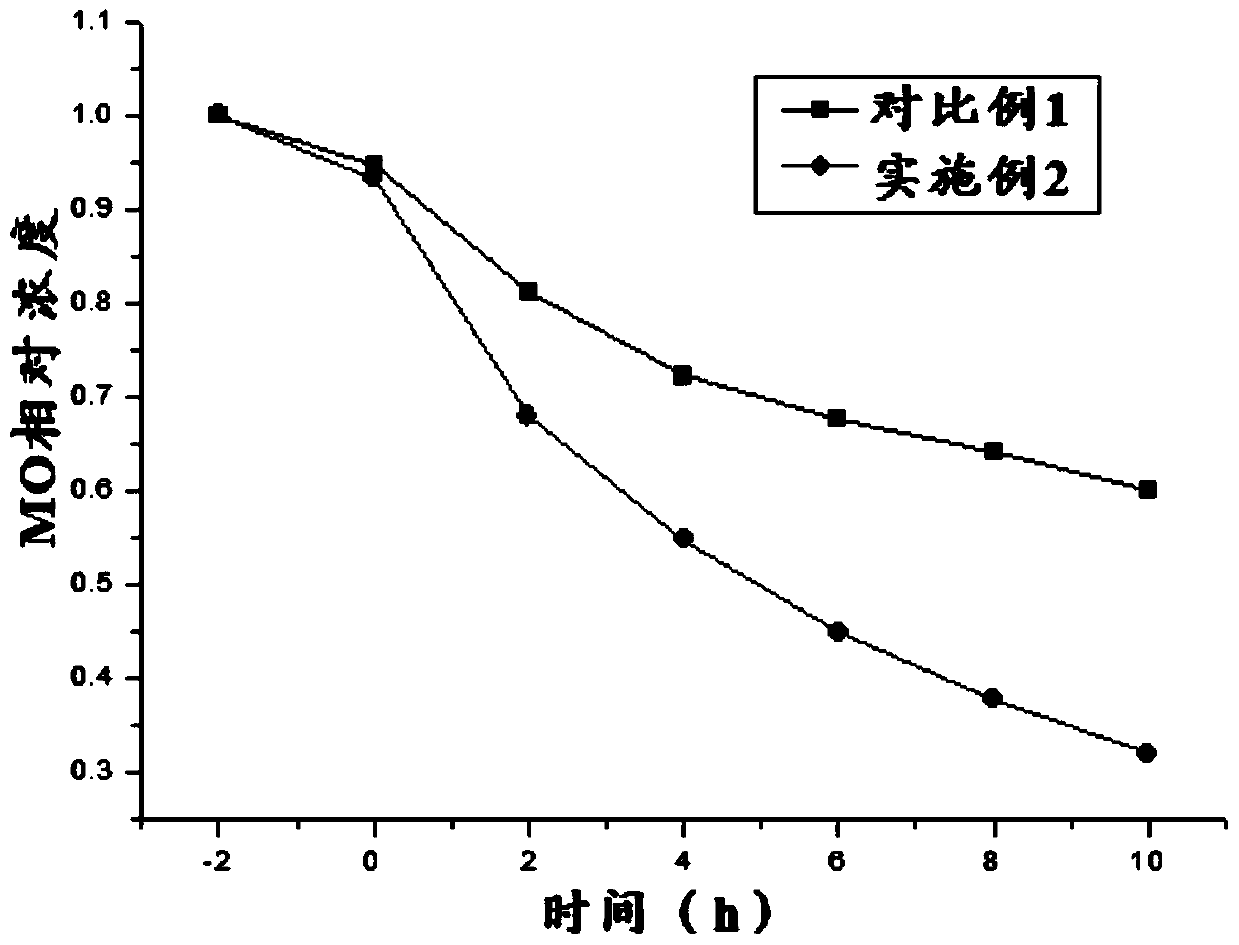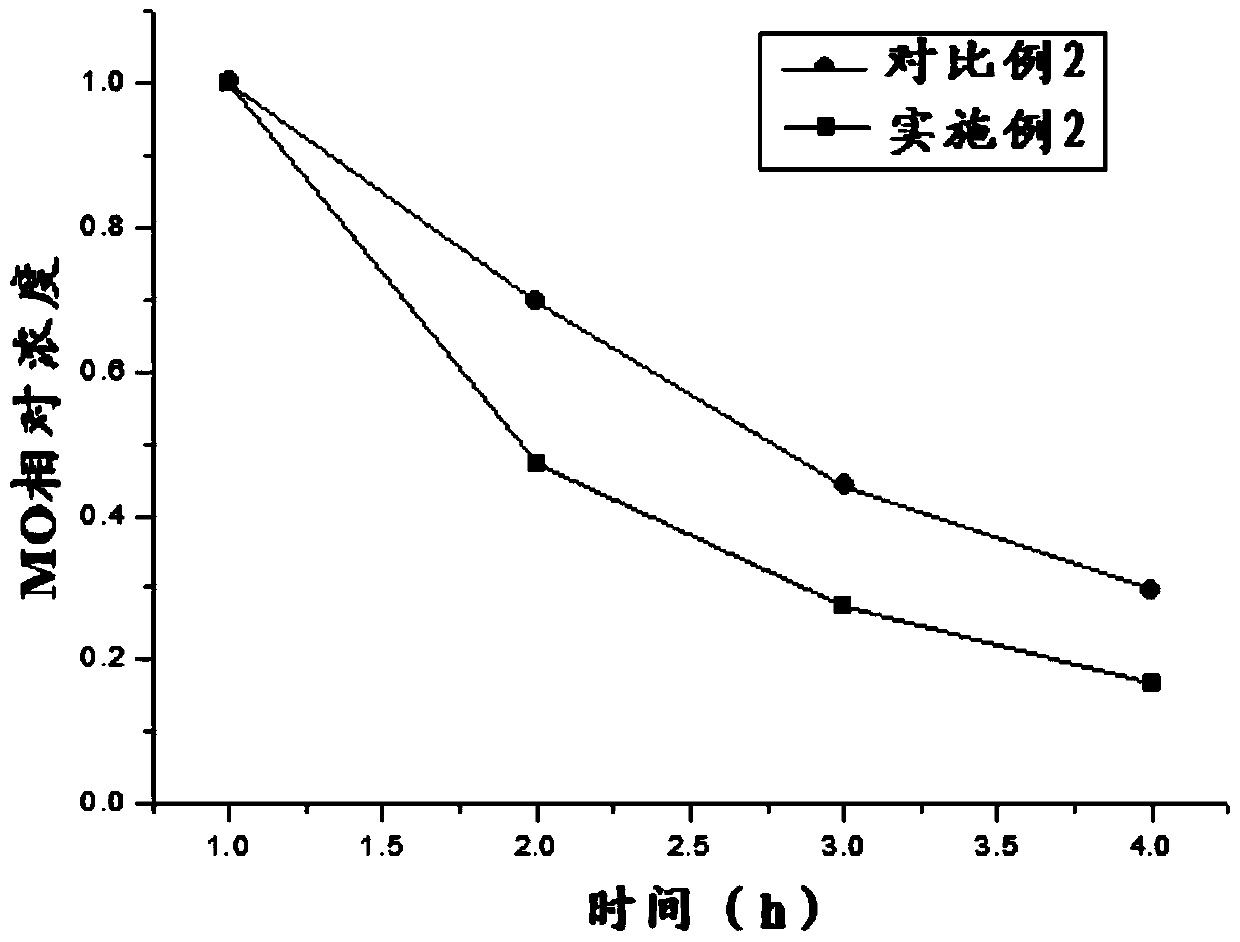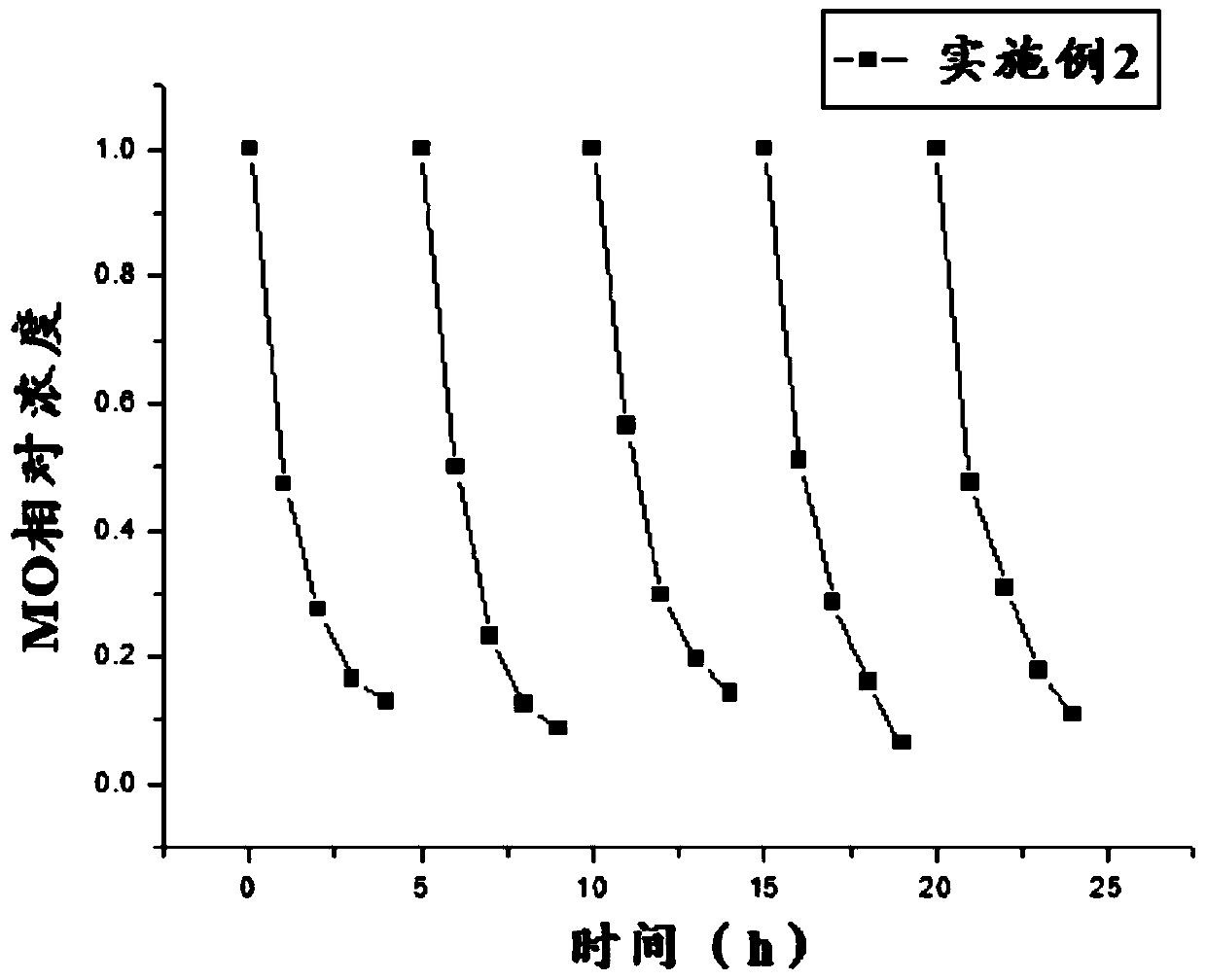A preparation method of a double self-cleaning fabric with long-lasting good photocatalytic self-cleaning and surface superhydrophobic effect
A self-cleaning and fabric technology, applied in the field of preparation of dual self-cleaning fabrics, can solve the problems of low self-cleaning durability, no catalytic effect, catalytic efficiency, etc.
- Summary
- Abstract
- Description
- Claims
- Application Information
AI Technical Summary
Problems solved by technology
Method used
Image
Examples
preparation example Construction
[0043] The invention provides a method for preparing a double self-cleaning fabric, the method comprising the following steps:
[0044] Step 1: adding modified nano-titanium dioxide to water;
[0045] Step 2: Irradiating the fabric;
[0046] Step 3: immerse the fabric treated in step 2 into the modified nano-titanium dioxide aqueous solution prepared in step 1, take it out, and optionally dry it to obtain a self-cleaning fabric.
[0047] In a preferred embodiment, in step 1, the modification method of the modified nano titanium dioxide includes metal and non-metal doping, semiconductor recombination, surface precious metal precipitation, dye sensitization and conjugated polymer doping modification. sex.
[0048] In a further preferred embodiment, in step 1, the modified nano-titanium dioxide is modified by conjugated polymer doping modification, for example: polythiophene, polyaniline, polypyrrole or polyvinyl alcohol PVA doping .
[0049] In a further preferred embodiment...
Embodiment 1
[0102] Example 1 Preparation of modified nano titanium dioxide
[0103] Add 2g of nano-titanium dioxide into a three-necked flask filled with 50mL of deionized water, then add 4g of polyethylene glycol PEG, stir mechanically for 3h, add polyvinyl alcohol PVA aqueous solution with a concentration of 2%, continue mechanically stirring for 2h, add 20mL of methanol, Stop stirring.
[0104] Filter the sample, wash it, and place it in a muffle furnace for calcination at 180°C for 2 hours to obtain modified nano-titanium dioxide, which is denoted as M-TiO 2 .
Embodiment 2
[0105] Example 2 Preparation of dual self-cleaning fabrics
[0106] (1) Add 100 mL of deionized water to 1 g of the modified nano-titanium dioxide prepared in Example 1, and ultrasonically;
[0107] (2) The nylon cloth after the desizing is carried out ultraviolet normal pressure irradiation 30 minutes;
[0108] (3) Immerse the nylon cloth treated in (2) in the nano-titanium dioxide aqueous solution in (1), ultrasonicate for 30 minutes, take it out and bake it in a blast oven at 60°C for 10 minutes, and then immerse it in the nano-titanium dioxide aqueous solution in (1) again medium, ultrasonic for 30 minutes, take it out and bake in a blast oven at 60°C for 10 minutes;
[0109] (4) Transfer the dried nylon fabric to a vacuum oven, vacuumize and dry at 140°C for 120 minutes, and obtain a fabric with a long-lasting and good photocatalytic self-cleaning effect, which is recorded as M-TiO 2 -PA.
PUM
| Property | Measurement | Unit |
|---|---|---|
| transmittivity | aaaaa | aaaaa |
| transmittivity | aaaaa | aaaaa |
Abstract
Description
Claims
Application Information
 Login to View More
Login to View More - R&D
- Intellectual Property
- Life Sciences
- Materials
- Tech Scout
- Unparalleled Data Quality
- Higher Quality Content
- 60% Fewer Hallucinations
Browse by: Latest US Patents, China's latest patents, Technical Efficacy Thesaurus, Application Domain, Technology Topic, Popular Technical Reports.
© 2025 PatSnap. All rights reserved.Legal|Privacy policy|Modern Slavery Act Transparency Statement|Sitemap|About US| Contact US: help@patsnap.com



